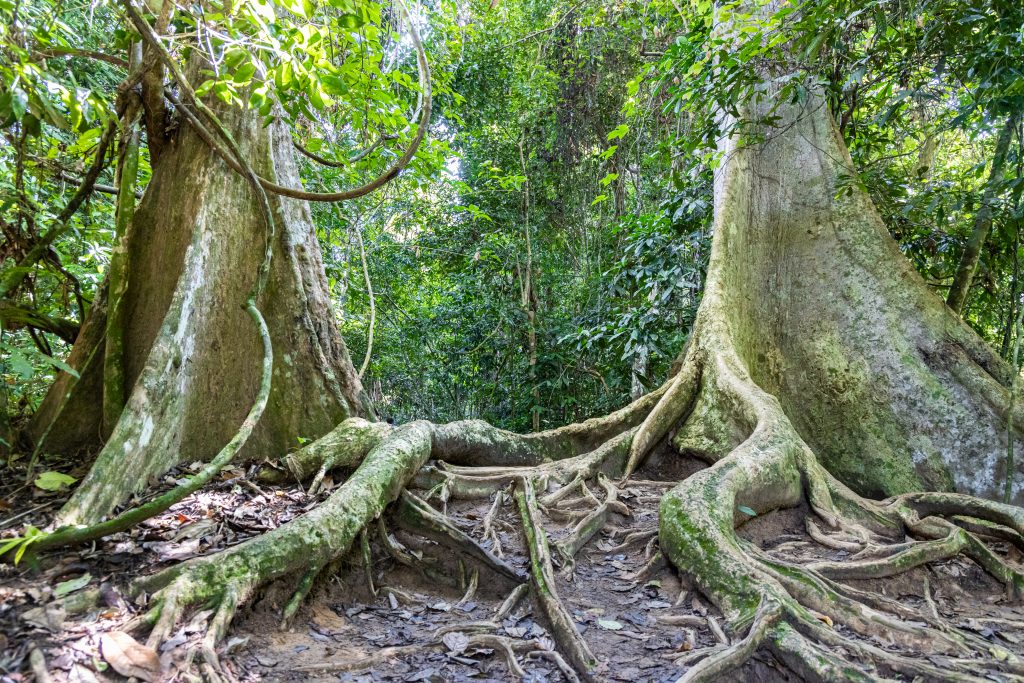Jesus uses fig trees to show how change is needed.
 Glen A Weber – Regional Support Team, Central Region
Glen A Weber – Regional Support Team, Central Region
As part of the Easter Season, it’s good to reflect on some of the lessons Jesus shared as he spent time with his disciples. We often read passages that are so familiar we can pass right over some aspects of the story. We need to remember that Matthew and the other New Testament writers used specific examples of Jesus’ works and words to make their points. We know John said if everything Jesus said and did was recorded, it would fill many books. I was recently intrigued with two stories of fig trees we see in Matthew. There can be several applications to these stories, but let me share how I feel this fits into the Easter Season as we head into Ordinary Time.

We find the first fig tree in Matthew 21, but first a bit of background. In Matthew 20, we see Jesus and the disciples have left Galilee, with Jesus again telling the disciples that he “must go up to Jerusalem” and that he would suffer, die, and be raised on the third day. Then he reminds the mother of James and John (as well as the rest of the disciples) that the Son of Man came to serve, not be served, and to give his life as a ransom. As they pass through Jericho, Jesus heals two blind men. In the first part of Matthew 21, we read Matthew’s narrative of Jesus’ triumphal entry into Jerusalem on Palm Sunday and then about Jesus cleansing the temple area on the first day of the week. Matthew’s account describes the story of the first fig tree occurring on the next day of the week.
In the morning, when he returned to the city, he was hungry. And seeing a fig tree by the side of the road, he went to it and found nothing at all on it but leaves. Then he said to it, “May no fruit ever come from you again!” And the fig tree withered at once. When the disciples saw it, they were amazed, saying, “How did the fig tree wither at once?” Jesus answered them, “Truly I tell you, if you have faith and do not doubt, not only will you do what has been done to the fig tree, but even if you say to this mountain, ‘Be lifted up and thrown into the sea,’ it will be done. Whatever you ask for in prayer with faith, you will receive. (Matthew 21:18-22 NRSVUE)
Recalling that Jesus said his food was to do the Father’s will and to complete his work (John 4) and noting the background of seeing the fruit of Jesus’ ministry, we can’t help but note that Jesus is making a point about the lack of fruit he sees in Israel – especially by the Jewish leadership. As Jesus is entering Jerusalem, his hunger is to see the fruit that the nation of Israel and their leaders were to be displaying. He knew they looked like a great nation (like a beautiful fig tree), but none of the Father’s fruit was being produced in them. Seeing the fig tree which also looked good but had no fruit, Jesus cursed the tree and caused it to wither away.
While the mountain can easily refer to the Roman empire, it seems Jesus is also referring to the misuse of the temple and the mountain of burdens the people faced under Jewish law. In the next few days, Jesus would explain the ultimate fate of Jerusalem and their leaders – not one stone would be left upon another, and the city would be overrun by Gentiles. The withered fig tree can easily represent what the nation of Israel would be like by 70 A.D.
Over the next few chapters, we see Jesus confronted by one group of Jewish leaders after another as he told parables to the people. The leaders were confronting him with trick questions, disagreements about the law and other ways to find an excuse to kill him and much of what he says are direct criticisms of those same leaders – and they know it!
Now let’s move to Matthew 24. Here the disciples are admiring the beautiful buildings of the temple area and Jesus gives a long description of what was going to happen to the people and nation of Israel between then and 70 A.D. In the midst of his teaching, Jesus addresses another fig tree, which we often read over without much thought.
From the fig tree learn its lesson: as soon as its branch becomes tender and puts forth its leaves, you know that summer is near. So also, when you see all these things, you know that he is near, at the very gates. Truly I tell you, this generation will not pass away until all these things have taken place. Heaven and earth will pass away, but my words will not pass away. (Matthew 24:32-35 NRSVUE)
This fig tree that has “tender” or new branches and is putting forth leaves. This is either a brand new tree or one that has been dormant and is now springing to life. What could this tree represent?
In the previous verses, Jesus has used symbolic language taken from several dozen Old Testament prophecies (earthquakes, sun going dark, armies surrounding the city, etc.) to describe the coming fall of Israel as a nation. An aspect of that tragedy will be what the national/religious leaders do in the next few days when they arrest, falsely convict, and demand the Romans kill Jesus. The Jewish Messiah (part of and representative of the fallen nation) will die with the withered nation/tree. However, through his death and resurrection, Jesus was announcing the kingdom of God. There was a new fig tree that was already beginning to grow and produce leaves (and eventually fruit). He told them you know that summer is near. You will see new growth; new life is happening.
Easter represents newness – new life. Jesus wasn’t just resuscitated in the same old body; he was resurrected into a new body. As we continue to build healthy churches, we don’t want to be like the fig tree that is no longer producing fruit because we are still doing things the same old way, or because we are putting burdens on others. We want to be the fig tree with tender branches, that is connected to the true vine, growing new leaves, that will produce fruit as we mature.
God has called us and invited us to participate in bringing about new life, new growth. He has invited us to be part of a tree that produces fruit. During this Easter Season and on into Ordinary Time, let’s continually ask Father, Son, and Spirit to produce fruit in us that fills the hunger of others.



Please note that comments are moderated. Your comment will not appear until it is reviewed.